The color white. Is there a more wonderfully anarchic color than white? A “non-color” color, without a tint, without a brand, but which with its silent elegance synthesizes all the colors of the visible spectrum with an impalpable discretion, giving a mystical brightness.
This is the color adopted by the artist Makoto Kobayashi for his sculptures, in the form of delicate suspended bodies which express in their vibrant stillness an ascetic dance made of folds and poetic curves, crystallized together with time in an infinite embrace, touching the perfect sense of ‘eternity’.
But who is Makoto, the creator of “codice bianco” (code white)?
Makoto is a Japanese artist born in Maebashi, where he graduated in graphic design in 1987 before moving to Italy.
After living in Rome he moved to Carrara in 1988 where he attended the Academy of Fine Arts, graduating in sculpture four years later.
Right here in Carrara Makoto learned Western academic techniques by choosing the material of which his wonderful white works will be made.
As an artist, he performs together with musicians, dancers, painters, actors and photographers, expressing his art in every form, winning numerous first prizes not only here in Italy, but all over the world, from Milan to New York to Buenos Aires.
Since 1996 he has practiced Shiatsu and Japanese dynamic yoga, and in 2004 he graduated from the Shiatsu course at the Nashira Integrated Natural and Holistic Disciplines Academy in Conegliano, teaching the Shiatsu technique and Japanese culture to the operators. Since 2004 he has also been teaching Origami lessons.
He starred in Ermanno Olmi’s film “Singing Behind the Screens” in the role of Admiral Ching, alongside Bud Spencer, and has acted in several other films, including alongside Johnny Depp.
In 2015 at the Milan EXPO he was stage director at the Japan pavilion, and the same year he set up an exhibition of his works at the archaeological museum of Venice.
It was four years later, on the occasion of the 500th anniversary of the death of Leonardo da Vinci, that he designed and presented an exhibition related to the artist in Milan. He has collaborated with musicians and dancers in official events for the Nakanajo Biennial 2017, 2019 and 2021 in Japan, and still currently lives and works in Italy.
Today we had the pleasure of interviewing Makoto, giving him the opportunity to explain to us first hand the fascinating thoughts and inner soul behind his “codice bianco” project.
1. First of all, thank you so much Makoto for granting us this interview. To begin with, a seemingly simple question, but one which contains all the meaning and essence of your art: why “Codice Bianco”, and why did you choose the color white for your works?
Makoto: I have been making white sculptures for many years. In ’96 I had a solo exhibition that was planned for a whole year before it was actually realized, and so I had a lot of time to think. I lived in Milan, and I often went to the cenacle to see the work of Leonardo da Vinci who is my legend, so I wanted to do something to pay homage to him, and so I decided to plan this exhibition. I had to think for a long time about the name to give to this exhibition. It was Leonardo himself who inspired the name “codice bianco” (code white). The word “codice” refers to the Da Vinci code, while “bianco” (white) simply refers to the color of the sculptures I create. My friends encouraged me further by confirming that this name was very suitable for my exhibition, so I have always adopted this stage name since 1996. Furthermore, “Makoto” is a very common name in Japan, therefore “codice bianco” would have been a way to quickly recognize me without confusing me with other people, even famous ones, of the same name.
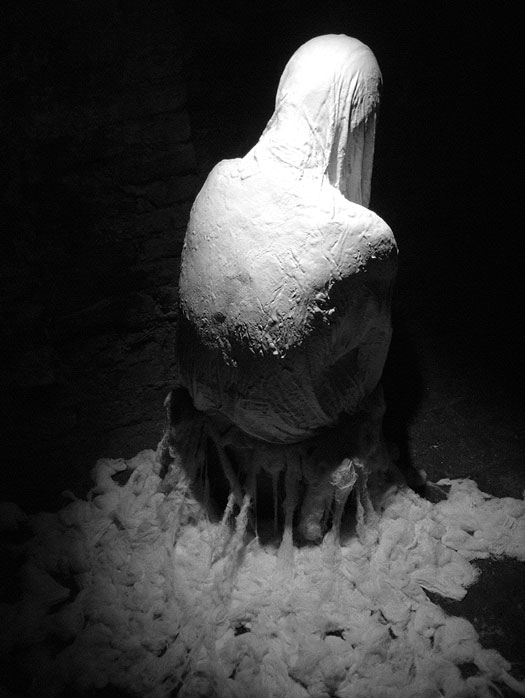
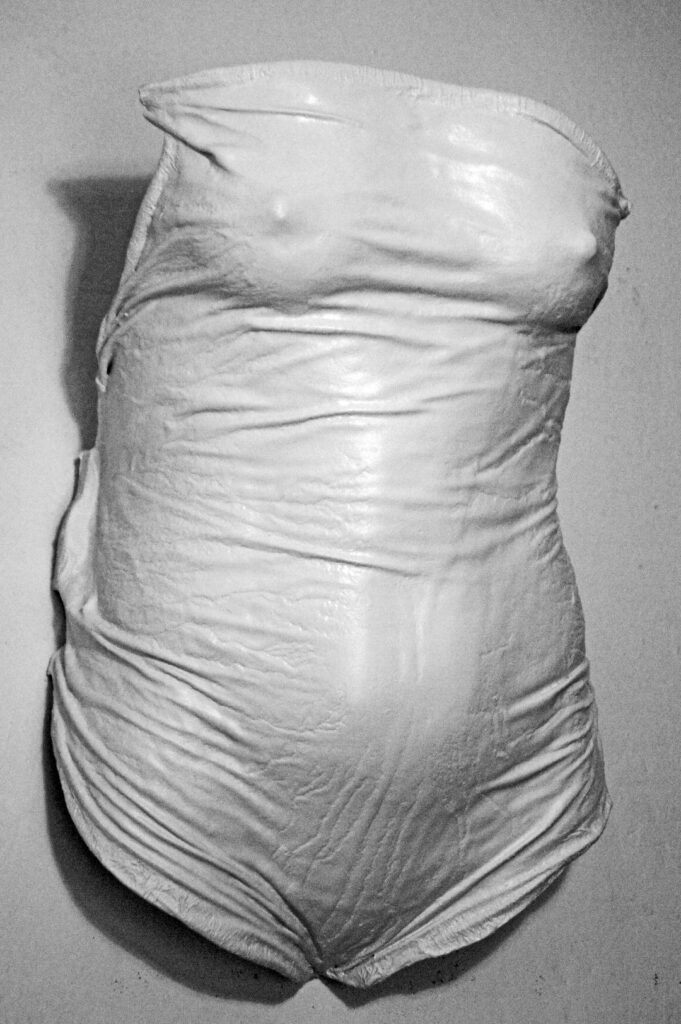
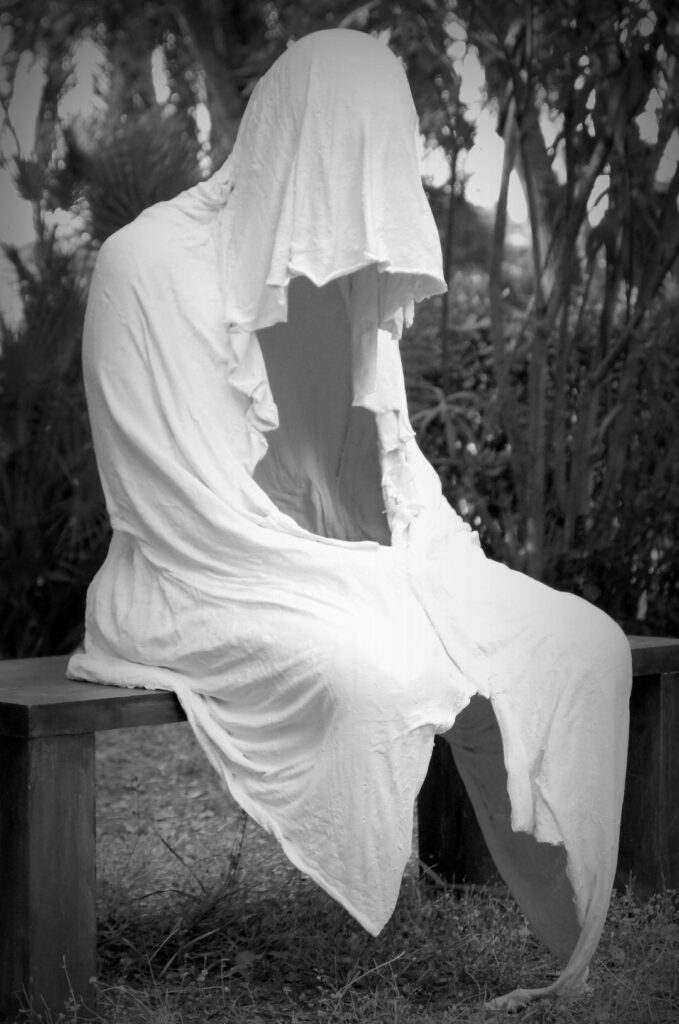
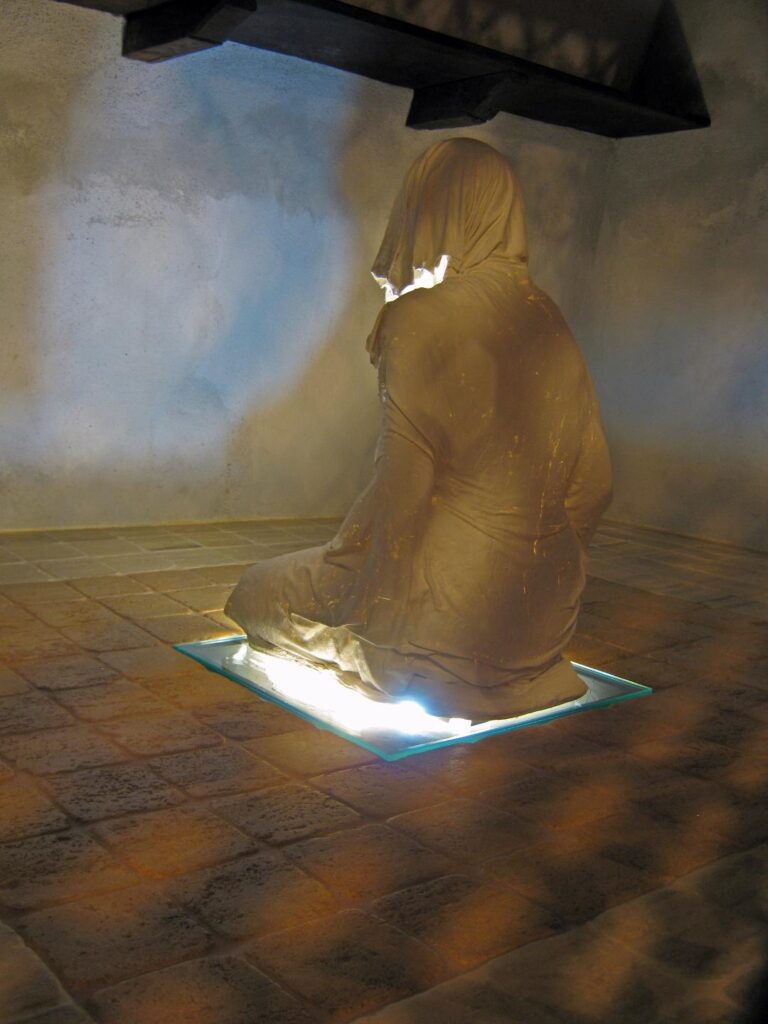
2. What do you want to communicate with your works?
Makoto: When I was a student at the Academy of Fine Arts in Carrara, of course I studied academic subjects, but I also happened to see avant-garde exhibitions. At that time I had to decide what my path would be. I’m not an artist who does particularly traditional things, but I also didn’t want to go too far, so I excluded the avant-garde, because I realized that people often didn’t understand this type of art. The intent of many artists is to communicate with their heads. For me, what has always mattered most was the feeling and sensations that a work could express. I think that when a person starts to reflect to understand a work, they can become distracted by the sensation that the work itself communicates to him/her. Therefore what I look for in what I do is finding that perfect middle ground. I try to create a work that can be felt before it even reaches the brain. Reflecting on what you see is important, but I want it to first of all reach the soul, then everyone is free to think as much as they wish, but after having experienced the emotion.
3. What materials do you use for your sculptures and how do you treat these materials to bring the work to life?
Makoto: When I was in Japan I studied graphic design, and this school was not only very new but also very particular. There, I was able to learn how to use and handle different materials, not just the subject of graphic design. Graphic design is based on two-dimensionality, whereas I wanted to play with three dimensions. One day, I decided I wanted to experiment with a particular technique by hardening fabrics. I took a sheet, and tried to harden it with plaster. This turned out to be a great discovery because I really liked the result and in fact the white color also starts from this experiment. So, the main materials that I still use today in my works are fabric and plaster. In 2016 I also started creating white masks, using traditional Japanese paper. Fabrics and paper are the materials that make up my works and I work them with plaster.
4. Where do you draw inspiration from?
Makoto: Most sculptors first create the sculptures, then look for the place to hold the exhibition, but I often do the opposite. First I decide where to have the exhibition, then I see if I can go and do an inspection, and then I look for inspiration from the very place where I will then make my future installation before I even have my works ready. By adopting this tactic several times, I understood that living in Italy really makes a lot of sense for me because despite the fact that in Japan, especially in Kyoto, there are many fascinating places where it would be very interesting to do art installations, unfortunately most of the time these very beautiful places are practically unattainable even for a visit. However, in Italy, there are many wonderful and ancient places that incredibly stimulate my creativity and are also much more accessible to be able to exhibit my works. In Japan it is practically impossible. You can see them on television or in magazines, but being able to hold an exhibition in an historic place is unthinkable, whereas in Italy this is possible. One of the main reasons why I am still in Italy is precisely because Italy supports my creativity, and this is very important for me.
5. What is the creative process for you?
Makoto: As already described, I start by finding inspiration from the place where I would like to have the exhibition. Then, in my mind, a sort of photographic image is created, dictated by the instinct of the place itself, in which my works are created specifically to be suitable for that particular place. Sometimes the image is so powerful that it seems like a real video in my head. At other times, however, I may decide to collaborate with someone, for example with dancers. In this case, these artists collaborating with me through their body, through a real “non-verbal” communication, speak to me through the movements, transmitting to me something that will then be the source of my inspiration. For me the “authenticity” of my models is fundamental to my creative process. Once I happened to create an installation with a piano, and I wanted the person present to be a real pianist, and not a person simply simulating the act of playing the instrument. The energy that came to me was totally different. In Japan, before the pandemic, I made an installation in a temple and the person present in the installation in a meditative position was a real monk. My inspiration is fueled by the energy of my model’s authenticity.

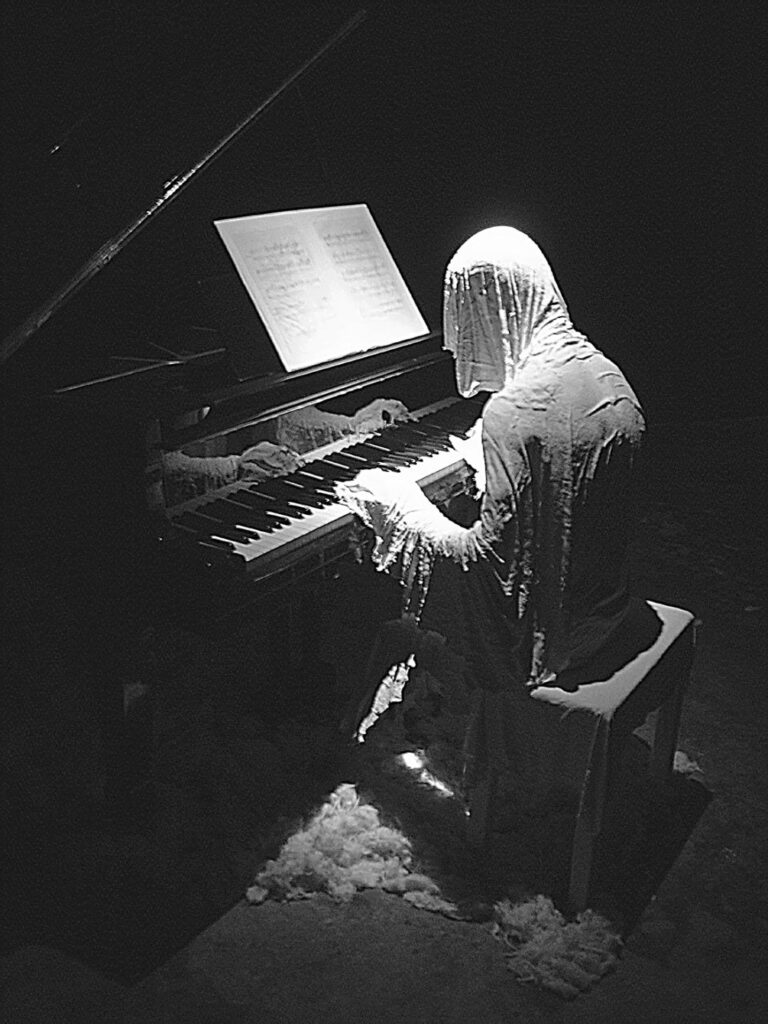
6. You are not only a sculptor, but also a Shiatsu operator, an Origami master, an actor, a dancer. Are these activities connected to each other in some way, leading to your philosophy of “code white”, or are they creative activities that are very distinct from each other, and is “white code” a world unto itself?
Makoto: When I was studying I did artistic performances too, and so when I was an actor, yes, this is certainly the primary element that also links me to my current activity as a sculptor, given that I often find inspiration precisely from dancers and bodies in movement, and I myself have done many performances related to my “codice bianco” project. Regarding Shiatsu, before working with my models, I always offer a Shiatsu treatment to them to allow the body and spirit to enter the “right dimension” to obtain an “energetically perfect” finished work. Creating a mutual energetic exchange between the artist and model, and relaxing the body and mind consequently makes the work even more complete.
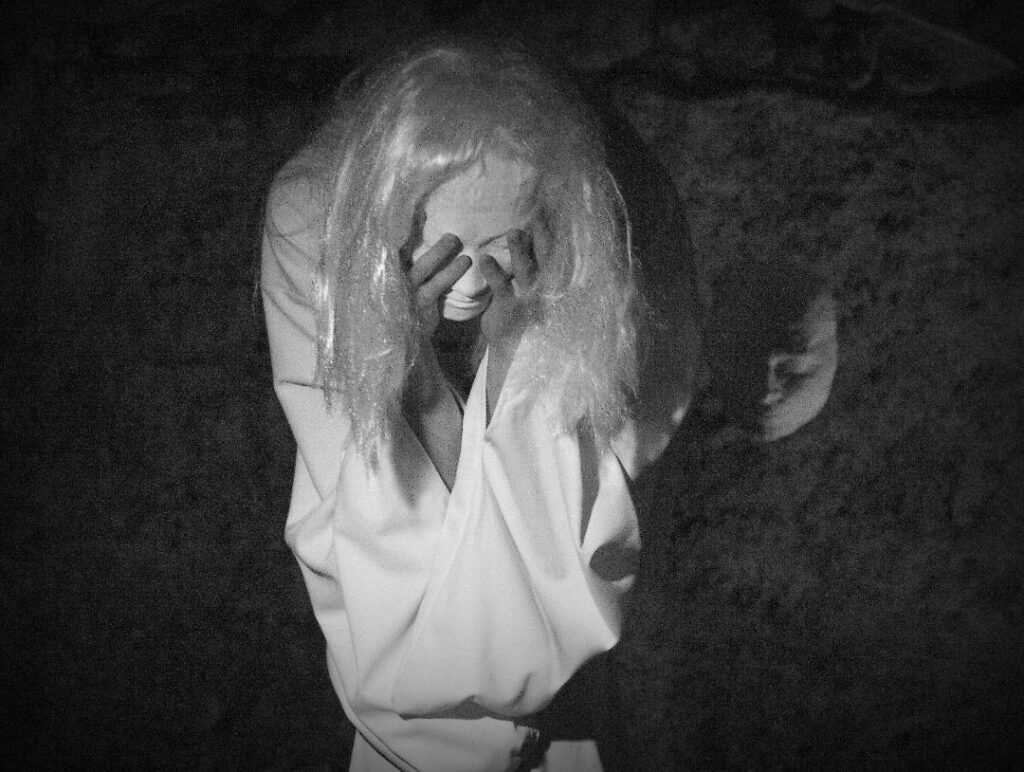
Makoto in one of his performaces for “codice bianco”
7. What feelings do you have while you are in the creative phase?
Makoto: An artist who uses a material such as clay can reshape his work as he wants, if he sees that the result obtained is not what he wanted. What I do is an instinctive art and the result is always an unknown, because when the the fabric I use is in the process of hardening with plaster, if the result is not as I want, I will no longer be able to modify it, therefore what I absolutely must do is control rationality. I have to have totally instinctive feelings because I have to trust the unknown.
8. Is there a new place where you would like to install your works?
Makoto: Yes… I would like to exhibit in an abandoned church located in Tuscany, which is very beautiful. It expresses a very strong energy, so if the opportunity arose, I would like to have my next installation there.
9. Do you have future plans?
Makoto: In addition to my desire to be able to create my installation in this church, next year I will have an exhibition again in Japan, then, even if it is not yet something completely concrete, regarding my work as a Shiatsu practitioner, I have just started collaborating with a Tuscan dancer. She will deal with dance therapy, and we would like to merge dance with the discipline of Shiatsu. We have already had a couple of lessons in Tuscany, so maybe we will attempt to move forward with this project by making it more concrete, and then try to promote it.

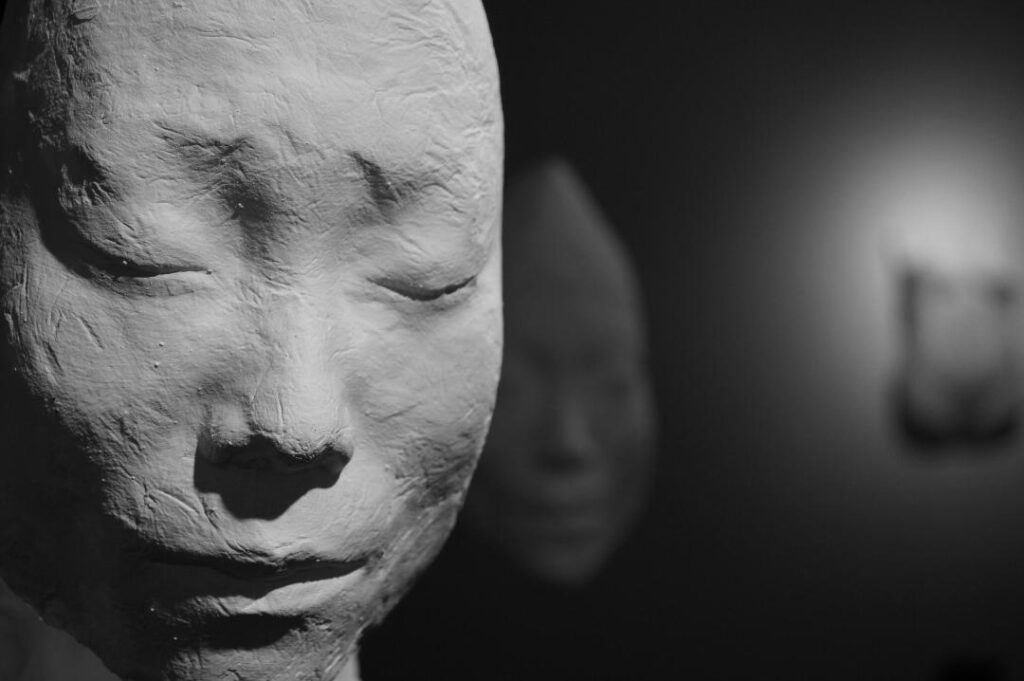
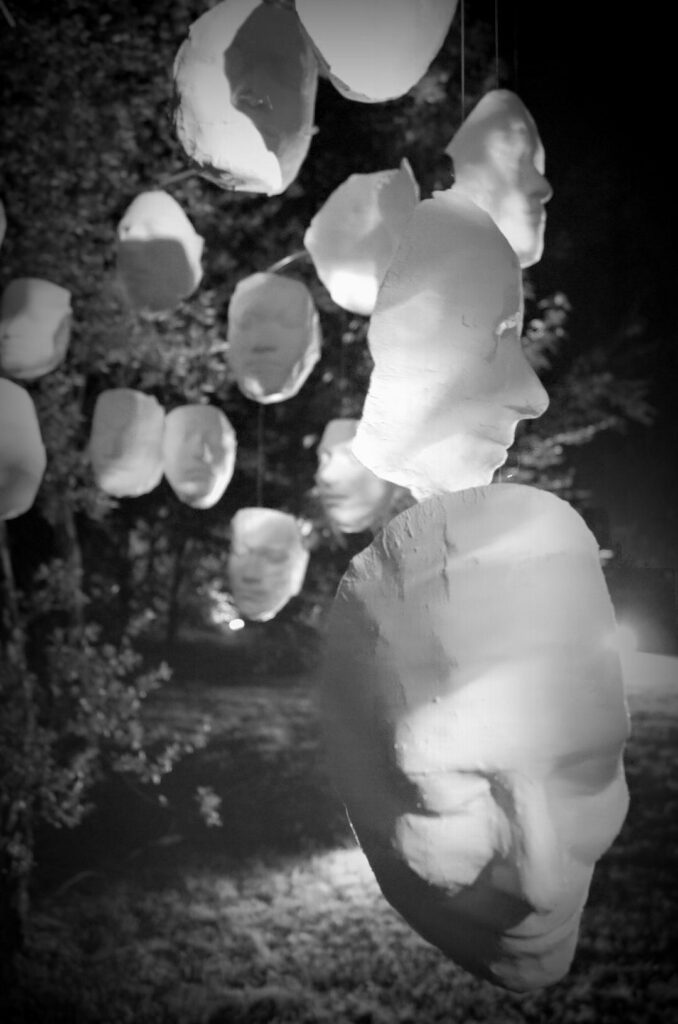
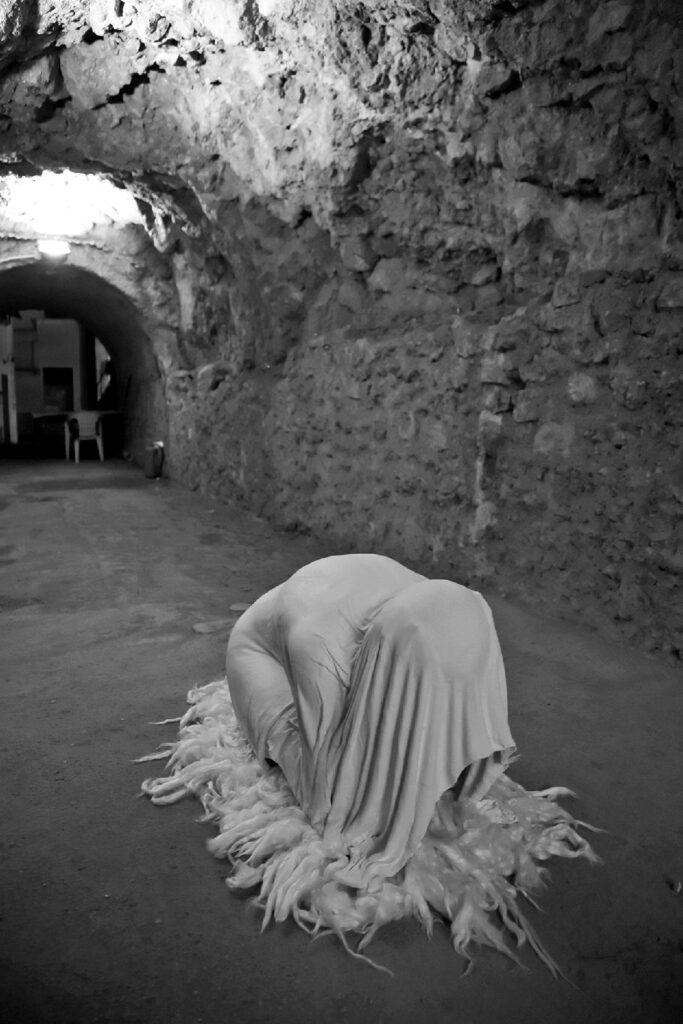
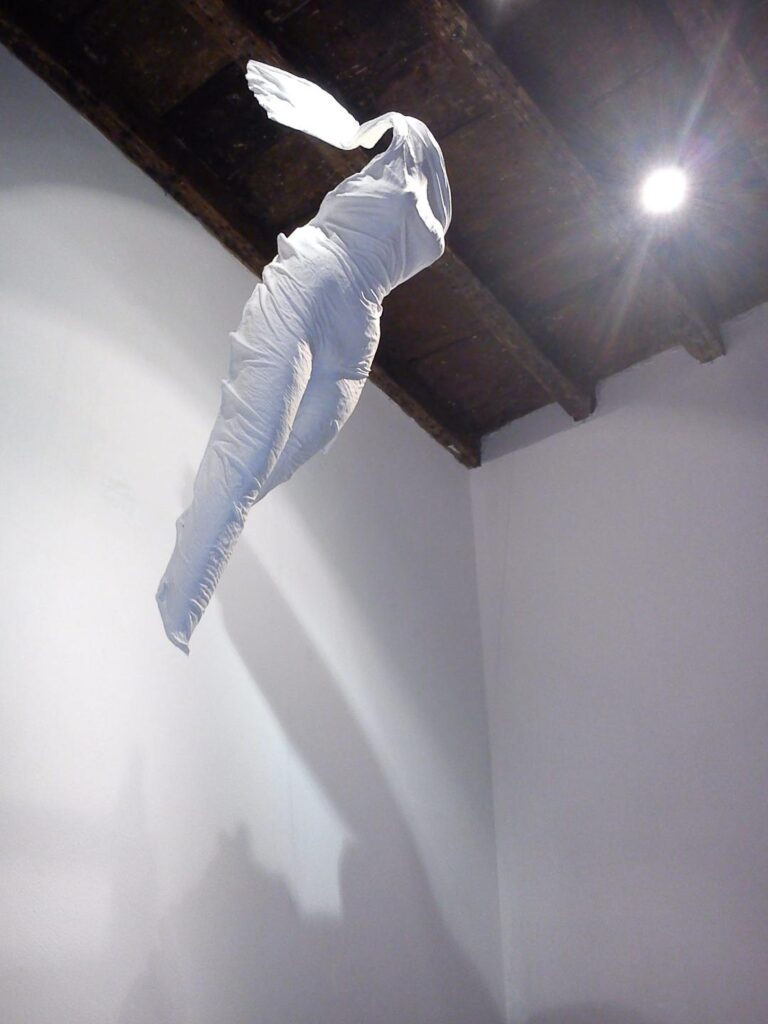

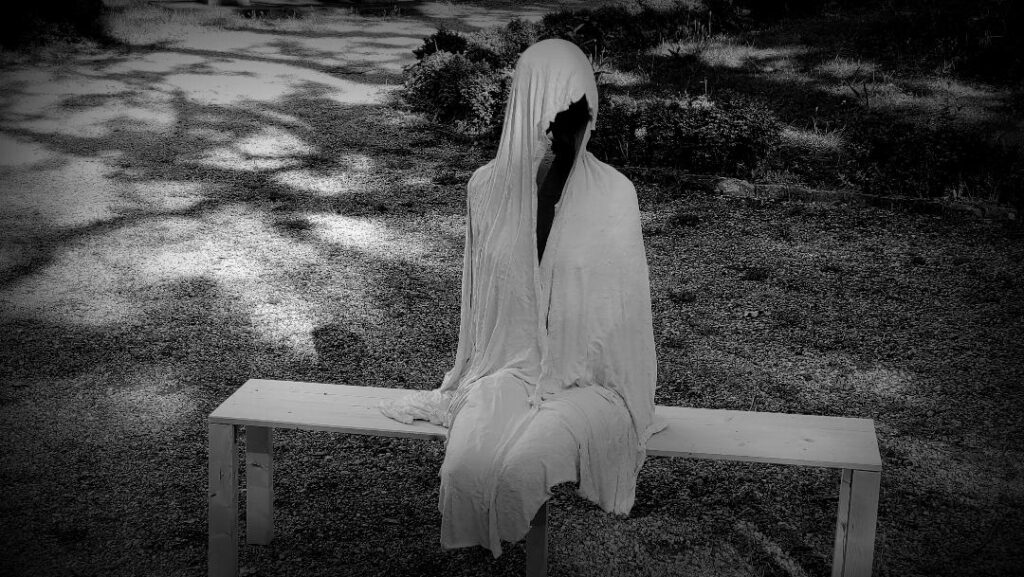
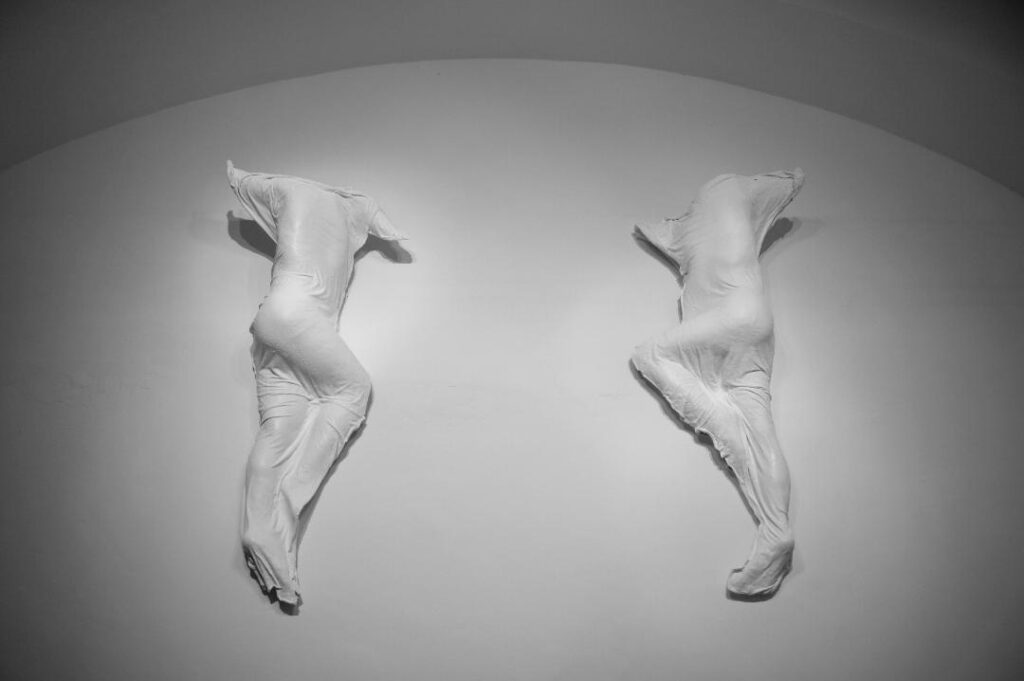
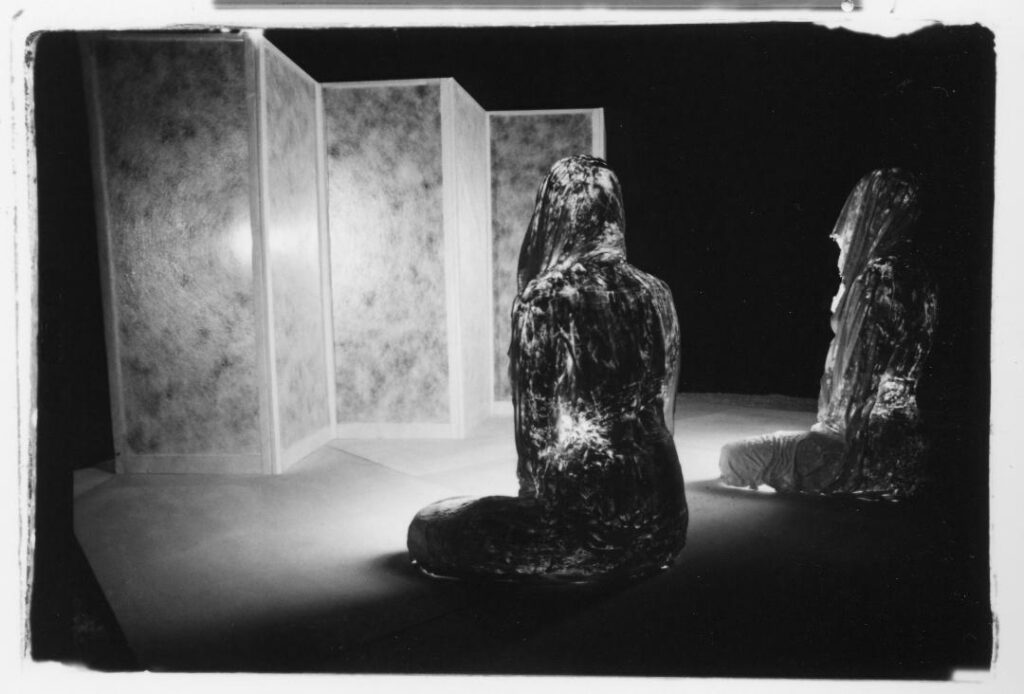
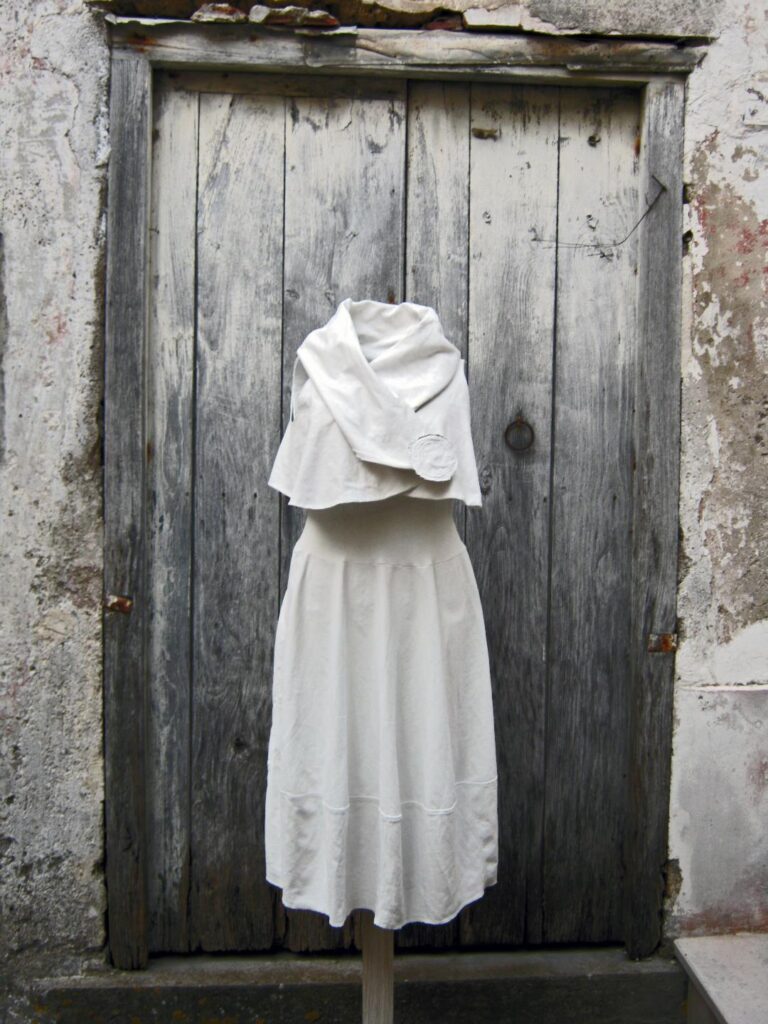
Thanks again to the artist Makoto Kobayashi for this interview and allowing us to explore his creative world.
Interview: Elena Caldera
Thanks to Claire Palmer
.
